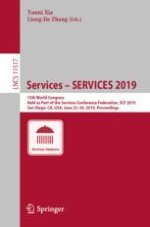This book constitutes the refereed proceedings of the 15th World Congress on Services, SERVICES 2019, held as part of the Services Conference Federation, SCF 2019, in San Diego, USA, in June 2019.
The 11 full papers and 2 short papers presented were carefully reviewed and selected from 14 submissions. The papers cover topics in the field of software engineering foundations and applications with a focus on novel approaches for engineering requirements, design and architectures, testing, maintenance and evolution, model-driven development, software processes, metrics, quality assurance and new software economics models, search-based software engineering, benefiting day-to-day services sectors and derived through experiences, with appreciation to scale, pragmatism, transparency, compliance and/or dependability.
